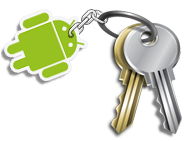 Me on Twitter
Me on Twitter 
- SimpleDateFormat 'Z' pattern (RFC822) does not match XSD timezone (ISO8601). There's only a ':' differing and that makes a BIG difference ! — 12 years 29 weeks ago
- RT @vogella: I donate money to Ubuntu for...being amazing http://t.co/ESHrRbbh — 12 years 29 weeks ago
- @louistouzet Android : optimisation des performances 1 - Fluidité de l'interface via @objetdirect http://t.co/ZDkvA867 — 12 years 29 weeks ago
- Another cup of #scala : it looks like #java. Enhanced. — 12 years 29 weeks ago
- Really fun game : @BadPiggies ! — 12 years 29 weeks ago
- Mailing from phone : so one can write a mail sms-style! — 12 years 30 weeks ago
- Second cup of #Scala : looks like mathematics — 12 years 30 weeks ago
- @CedN :-) — 12 years 31 weeks ago
- @mathieudulac "The class is designed to be self-contained" "You should have at least one year programming experience." https://t.co/cWBn2m0g — 12 years 31 weeks ago
- @CedN Ayé. 1er devoir terminé. Et toi ? — 12 years 31 weeks ago

 Android requires developers to sign their applications with a digital certificate and that each future release be signed with the same certificate.
Android requires developers to sign their applications with a digital certificate and that each future release be signed with the same certificate.